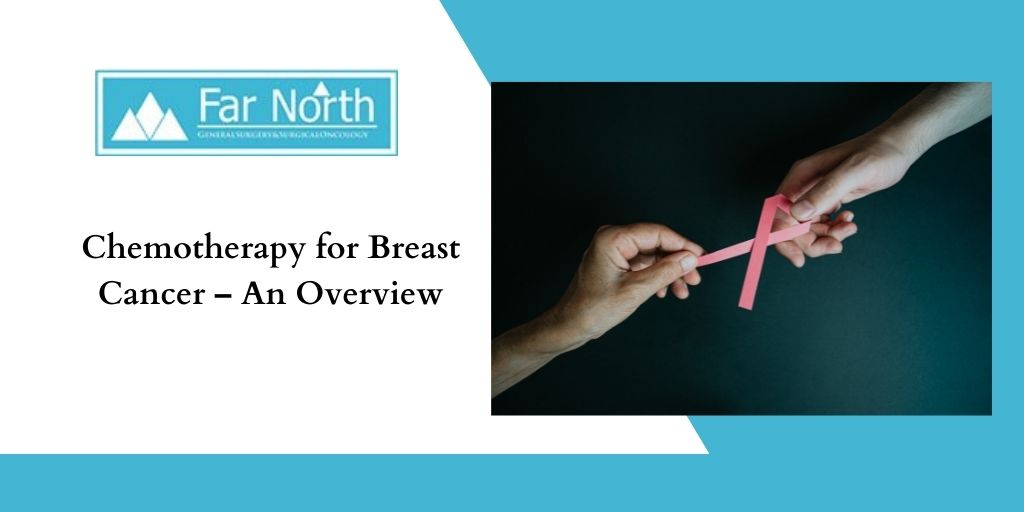Breast cancer occurs when the breast cells grow uncontrollably, which can present itself as a lump. Though life-threatening, breast cancer can be controlled with chemotherapy, an aggressive drug therapy. Chemotherapy drugs destroy cancer cells and stop their growth, alleviating breast cancer symptoms and increasing the chances of a cure or remission.
Chemotherapy treatments can be customized for each patient, depending on their:
Stage and type of breast cancer
- Previous treatments
- Personal treatment preferences
- Overall health condition
- Hormone-receptor status (breast cancer cells having receptors for progesterone or estrogen hormones affect how the cancer is treated)
- HER2 status (breast cancer cells with abnormal levels of HER2 protein tend to grow and spread faster, so hormonal therapy may be needed)
- Menopausal status (premenopausal women receive significant benefits from chemotherapy)
Chemotherapy for Early-stage Breast Cancer
Early-stage breast cancer is classified into:
Stage I
- Stage IA – Cancer is confined to the breast with a 2 cm or smaller tumor
- Stage IB – Cancer cells are found in the lymph nodes, without a tumor or with a 2 cm or smaller tumor
Stage II
- Stage IIA
- Cancer cells are found in the armpit or lymph nodes without a tumor
- Cancer spreads to the axillary lymph nodes with a 2 cm or smaller tumor
- Cancer has not spread to the axillary lymph nodes with a 2-5 cm tumor
- Stage IIB
- Cancer has spread to the axillary lymph nodes or lymph nodes near the breastbone with a 2-5 cm tumor
- Cancer has not spread to the axillary lymph nodes with a tumor larger than 5cm
Stage III
- Stage IIIA
- Cancer spreads to 4-9 axillary lymph nodes or lymph nodes near the breastbone without a tumor
- Cancer cells found in the lymph nodes with a 5 cm or smaller tumor
- Cancer spreads to the axillary lymph nodes or lymph nodes near the breastbone with a tumor larger than 5cm
- Stage IIIB
A tumor of any size spreads to the breast skin or chest wall, 9 axillary lymph nodes, or lymph nodes near the breastbone.
- Stage IIIC
A tumor of any size spreads to the breast skin or chest wall, 10 or more axillary lymph nodes, lymph nodes above or below the collarbone, or lymph nodes near the breastbone.
Chemotherapy is either used:
- After surgery to destroy the remaining cancer cells, reducing the risk of recurrent cancer
- Before surgery to shrink the tumor, making it easier to remove with surgery
Generally, chemotherapy provides exceptional benefits to:
- Patients with cancer in the lymph nodes, regardless of their menopausal status and tumor size
- Premenopausal women with invasive breast cancer
- Women with early-stage breast cancer that is HER2-positive and hormone-receptor-negative
- Patients at a higher risk of recurrent cancer
Chemotherapy is not recommended for non-invasive, in-situ cancers, such as Ductal Carcinoma in Situ (DCIS), as it is less likely to spread to other parts of the body.
Chemotherapy for Advanced-stage/Metastatic Breast Cancer
Advanced-stage breast cancer includes stage III and stage IV.
Stage IV (Metastatic Disease)
It is invasive breast cancer that has spread to other organs, such as the liver, lungs, distant lymph nodes, brain, skin, or bones.
Chemotherapy is often used to treat advanced-stage or metastatic breast cancer to increase the survival rate of patients. Common chemotherapy drugs used for the treatment include:
- Ellence (epirubicin)
- Taxol (chemical name: paclitaxel)
- Ixempra (ixabepilone)
- Abraxane (albumin-bound or nab-paclitaxel)
- Taxotere (docetaxel)
- Navelbine (vinorelbine)
- Adriamycin (doxorubicin)
- Halaven (eribulin)
- Gemzar (gemcitabine)
- Xeloda (capecitabine)
While you go through chemotherapy for advanced-stage breast cancer, your doctor may recommend:
- One chemotherapy drug at a time if you have had chemotherapy before to reduce potential side effects and maximize benefits
- Continue using chemotherapy drugs until they become ineffective or cause severe side effects
- A combination of medicines for some advanced-stage cancers that may work better, resulting in a better prognosis
- Alternative treatment if the cancer recurs even after having chemotherapy
Hormonal therapy before or after chemotherapy if the cancer is hormone-receptor-positive
During chemotherapy, your doctor may perform the following tests to determine the effectiveness of the treatment and how well you are responding to it:
- Blood cell counts
- PET scan
- Blood tumor marker test
- Chest X-rays
- MRI scan
- CT scan
- Bone scan
All stages of breast cancer can be treated with chemotherapy, provided it is detected on time. For more information related to breast cancer and its treatment options, contact us at Far North Surgery today!


